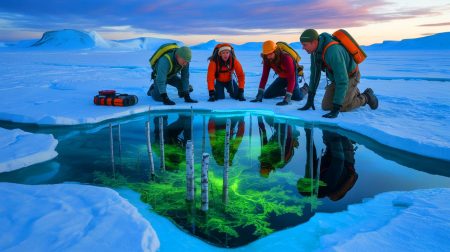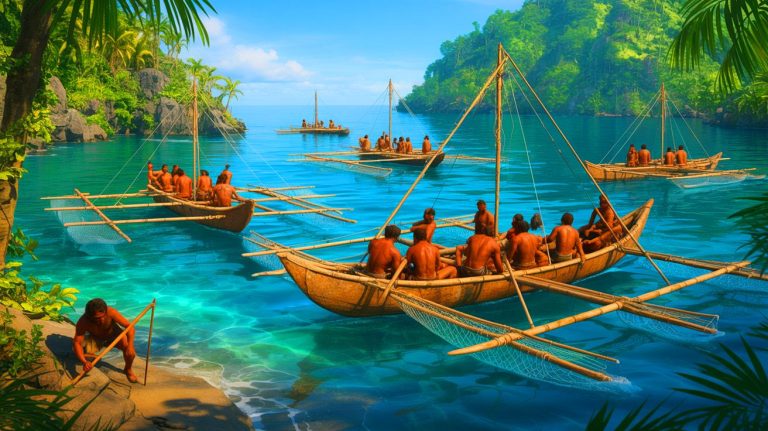| IN A NUTSHELL |
|
Recent findings have shed new light on the technological prowess of ancient maritime societies in the Philippines, revealing that their capabilities were far more advanced than previously understood. Researchers have uncovered evidence of sophisticated boat-building and deep-sea fishing technologies dating back over 40,000 years. This discovery challenges our understanding of human innovation and migration, suggesting that these early societies possessed the knowledge and skills necessary for long-distance oceanic travel. The implications of these findings extend beyond the Philippines, offering insights into how ancient peoples might have populated remote regions across the globe.
Unearthing Evidence of Ancient Maritime Technology
Researchers Riczar Fuentes and Alfred Pawlik, from Ateneo de Manila University, have embarked on a groundbreaking study to explore the history of maritime technology in prehistoric times. Their research focuses on the tools and techniques used by ancient peoples to navigate vast ocean distances. In particular, the team examined the presence of fiber-based cords and knots, which, until now, had been primarily associated with archaeological sites in Africa and Europe. This study marks a significant milestone by providing concrete evidence of similar technologies in Island Southeast Asia (ISEA).
Although previous studies have suggested the existence of advanced maritime capabilities, direct evidence has been elusive. The researchers argue that the organic materials used in boat construction and fishing nets have likely decomposed over millennia. Despite this challenge, their work has successfully identified indirect evidence supporting the use of sophisticated tools for sea travel. This includes microscopic analysis of stone tools, revealing traces of plant processing for rope-making—a crucial component for constructing sea vessels.
Sophisticated Fishing Techniques and Fiber Craftsmanship
The research team concentrated their efforts on the ISEA region, which has a rich history of human occupation dating back 42,000 years. To unravel the complexities of ancient maritime technology, they meticulously analyzed archaeological sites in Mindoro and Timor-Leste. Their findings uncovered fishing implements such as hooks, gorges, and net weights, indicating advanced fishing techniques. These tools suggest that the prehistoric inhabitants were adept at catching large, migratory fish, a feat that would require intricate knowledge of marine life and robust fishing gear.
The analysis also revealed significant evidence of plant fiber extraction, underscoring the importance of rope and net-making in ancient societies. This discovery highlights the technological sophistication of these early people, allowing them to construct durable seafaring equipment. The implications of these findings are profound, as they suggest that early humans possessed the cognitive abilities necessary for strategic planning and resource management, key indicators of behavioral modernity.
Implications for Understanding Human Migration
The discoveries made by Fuentes and Pawlik provide a compelling glimpse into the capabilities of ancient maritime societies. Their research suggests that early humans were not only capable of crossing open seas but did so with a level of sophistication previously unacknowledged. By establishing a connection between plant processing and seafaring, the study presents a strong case for the presence of behavioral modernity in these ancient populations.
While the study provides valuable insights, it also raises questions about the motivations and methods behind these long-distance voyages. Why did ancient peoples venture into the open sea? What drove them to explore and settle on distant islands? These questions remain unanswered, but the evidence underscores the complexity of human behavior and the innovative spirit that has characterized our species throughout history.
Challenges and Future Directions in Archaeological Research
Despite the groundbreaking nature of this research, the study highlights the challenges faced by archaeologists in reconstructing ancient histories. The decomposition of organic materials poses a significant barrier to understanding the full extent of prehistoric technological advancement. However, the researchers emphasize the importance of indirect evidence, such as plant processing and tool use, in piecing together the puzzle of ancient maritime travel.
Moving forward, the study opens new avenues for archaeological exploration, encouraging researchers to employ innovative techniques and interdisciplinary approaches. By combining traditional archaeology with modern technology, such as DNA analysis and remote sensing, scientists can continue to uncover the mysteries of our past. The quest to understand ancient maritime capabilities is far from over and promises to yield further revelations about the ingenuity and adaptability of early humans.
The recent findings in the Philippines have reshaped our understanding of ancient maritime societies, revealing a legacy of innovation and exploration. As researchers continue to delve into the complexities of prehistoric seafaring, what new insights will emerge about the interplay between technology, migration, and human evolution?
Did you like it? 4.4/5 (23)






This is incredible! Imagine the courage it took to sail the vast ocean 40,000 years ago. 🌍
Wait, did they find actual boats? Or just the tools used to make them?
Hats off to the researchers for uncovering such a fascinating piece of history. 🏆
This challenges everything we thought we knew about ancient human capabilities. Amazing!
Are there any plans to recreate these ancient boats using the discovered techniques? That would be cool!
Wow, the Philippines have such a rich history. Proud to be Pinoy! 🇵🇭
So, they were fishing before it was cool? 😂
Does this mean that other regions might have similar undiscovered histories? The implications are mind-blowing!
Is there any evidence of what kind of fish they were catching back then?
It’s fascinating to think about how advanced these early societies were. We have so much to learn from them.
This is the real history lesson we need. Thanks for sharing!
40,000 years ago?! That’s older than my jokes! 😆
Are there any illustrations or reconstructions of these ancient tools available?
It’s amazing how much we can learn from microscopic analysis. Science is awesome!
I wonder if this will change the way we view human migration patterns.
Can someone explain how they know these tools were used for boats? I’m curious!
I’m skeptical. How can they be so sure about the dates? 🤔
Such a groundbreaking discovery! Can’t wait to see what’s unearthed next.
Imagine the stories those ancient sailors could tell us. History is full of mysteries!
What drove them to venture into the open sea? The spirit of adventure is timeless! 🌊
It’s hard to wrap my mind around ancient seafaring. Humans are truly remarkable.
Why doesn’t this make it to the mainstream news? It’s revolutionary!
Are there similar studies underway in other parts of Southeast Asia?
This kind of research should get more funding. It’s crucial for understanding our past.
How do they determine the age of these tools? I’d love to learn more about the process.
Can we trust these findings? Skeptic here, but open to being convinced.
Phenomenal work by the archaeologists. They deserve a medal! 🥇
Does anyone else think of Moana when they read about ancient ocean voyages? Just me? 🌺
I hope they find more evidence to piece together this fascinating history.
I always knew early humans were smart, but this is next-level genius!
Did they mention any specific locations where these tools were found?
It’s about time we acknowledge the sophistication of early societies.
Such discoveries remind us of our shared human heritage. Beautiful!
I’m eager to see how this changes our understanding of ancient trade routes.
Are any of these tools on display in museums? I’d love to see them in person!
Can anyone recommend more reading material on ancient maritime technology?